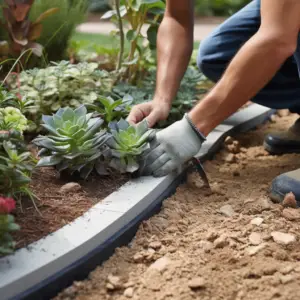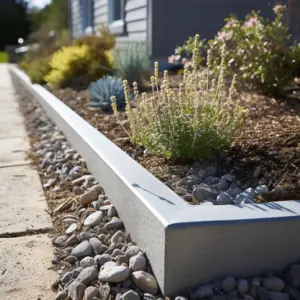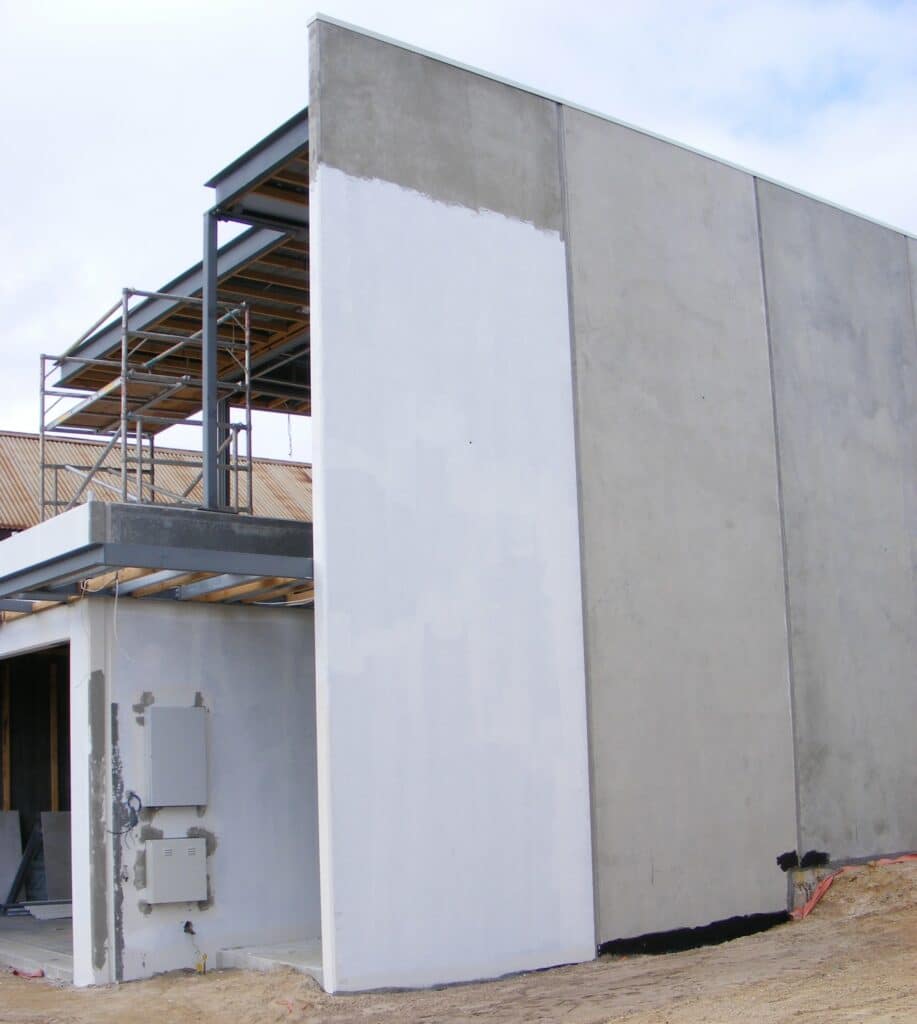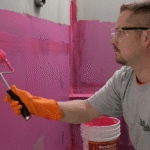Concrete edging techniques, Any concrete project requires an edger at a certain point to create a clean edge along the top of a concrete slab for a nice finish and prevent water from penetrating the bottom of the concrete and causing damage.
However, what if you don’t have an Edger? What other alternative can you use in place of an edger? Fortunately, there are alternatives that you can use to hone your slab to perfection, like a Steel finishing trowel or powered gas/electric trimmers/string trimmer, shovel, etc., based on the project you’re working on.
Ensure you stick with us even as we unveil various ways to edge concrete without an edger and more tips.
Table of Contents
What Are Concrete Edging and an Edger?

A landscaping process aimed at forming a border among two types of ground, like, between the flowerbed and the pawn, is called “concrete edging.” The main objective is to prevent the grass from invading the flower bed while accentuating the flourishing landscape.
On the other hand, an edger is a length tool used to clean up the concrete’s slab edges while creating a smooth edge above the newly placed concrete. As a result, you will get a new curb appeal on your concrete but a fine edge with no grooves or ruts.
An edger is designed to cut through even the tiniest concrete poured layer surfaces, making them the best tool to use on driveways and patios and not through thicker cement surfaces. However, when you don’t have an edger, here is how you can edge your concrete.
How To Edge Concrete Without An Edger
You usually see people on a sidewalk poured with fresh concrete and observe someone finish the concrete. But do you take time to see how the process is done? The truth is edging is not an easy process unless you do your research well.
The secret to an even finish on the concrete’s new edges doesn’t lie in rounding them with the right tools before removing the forms if the concrete is still damp but in allowing it to dry to the right consistency before applying the tools. Use the following steps to edge your concrete with an edger.
Therefore we take you through the steps to follow when edging concrete without using an edger. Keep reading:
Pour and Screed the Mixture
After pouring your concrete, trowel it with a wooden float, then let it cure any water on the surface. The process will take about 20-30 minutes from the trowel time. At this point, you push the cement mixture into the surface and level out what “screeding.”
Break out the Darby
Use the appropriate “darby” based on the project. The tool should cover half the distance across your working area. Unlike screeding (roughing in of concrete), the darby will tune your concrete. To get this done, you need sandpaper; after that, remove the marks by sanding the surface for a perfect result.
Sweep the concrete darby across, overlapping the arcs to level the surface while pushing down any lumps and filling the voids. You may lift the edges slightly but stick to the area’s darby level.
Wait For the Service Water to Dissipates
After the first two steps, water will surface on the concrete mixture. Never mind s, this is normal. Allow the water to disappear into the concrete by itself. This step is crucial so give it time to reabsorb before you start edging to prevent weakening the surface.
Edge your Concrete
Here the concrete will begin to dry off. When the water completely disappears, use your thumb to test whether the concrete is set for the final steps. Based on the project, be it a slab, driveway, sidewalk, or patio, you would prefer to run an edging tool around the outer slab.
You can use a steel finishing trowel to get a fancy, smooth surface for those who don’t have an Edger. It may not be perfectly flat because of the vulnerability to lifting the tool to avoid digging into the concrete.
Another option you can try is using a broom to gently drag it on the surface by pulling it and not pushing it. Do it similarly if you want a rough surface like sidewalks.
Get Your Groove In
This step is important as concrete edging techniques prevents the cracking of the concrete as it expands and contracts over time. Grooving should be a quarter of the slab’s depth; Concrete edging techniques it is a sidewalk, it should be every ten feet.
Trowel or Floating
Remove all marks on the surface using a wooden float. You can create a rough sidewalk to make walking easy. While for smoother surfaces like the inner floor, use a hand trowel and repeat 3 times to achieve the glassy finish.
Cure
Let the concrete cure for about a week, which is 5-7 for a full-strength cure, and be ready to handle all projects, including the sidewalks.
Benefits of an Edger

- An edger is your number one choice when it comes to edging concrete because:
- The machine handles all jobs, including corners and angles. It can be used as a substitute for conventional tools such as screeds and trowels.
- An edger is time-saving.
- It provides a cleaner cut than the manual hand tools due to inconsistency
- It makes clear cuts, especially in corners or diagonally, thus avoiding a mismatch of two-sided landscape
- With an edger, you achieve uniformity as they have a robust blade.
- Allows easy cutouts near objects like frames.
What Is A Concrete Edger Known For?
- An edger is versatile and thus used to do various things such as
- It adds decorations to complete concrete surfaces
- It makes brittle, straight lines on the patios and sidewalks, allowing you to add factors like bullnoses.
- They are used in concrete finishing
- It operates and saves time.
A Concrete edger works when you’re edging concrete, and it is a multipurpose tool with greater efficiency and excellent results. However, when you want to edge your concrete and cannot get an Edger, don’t forget conventional tools like the steel trowel.


